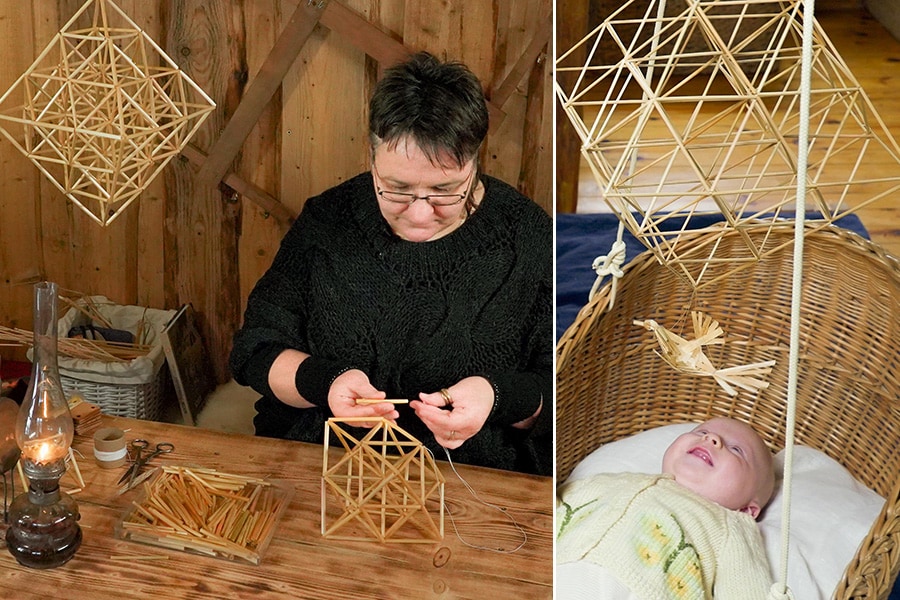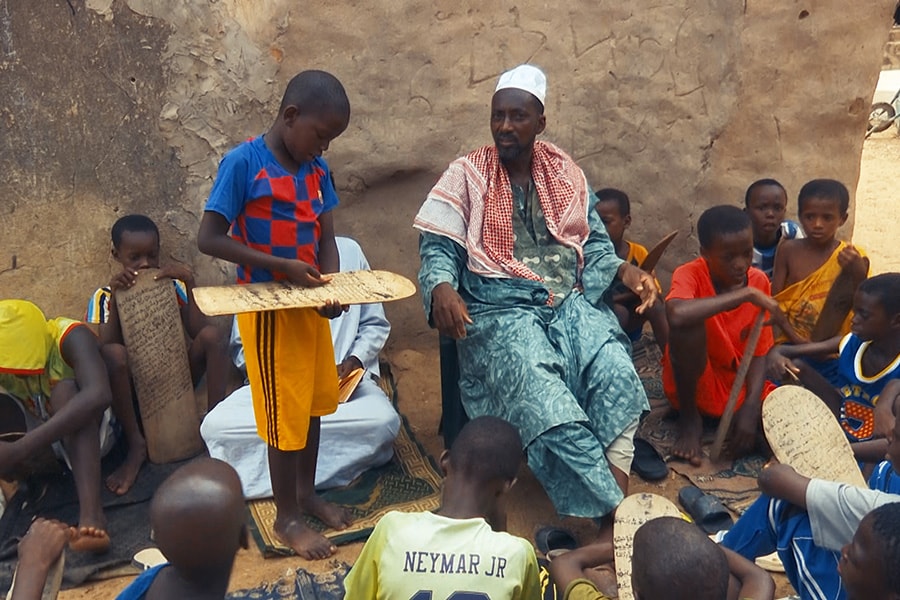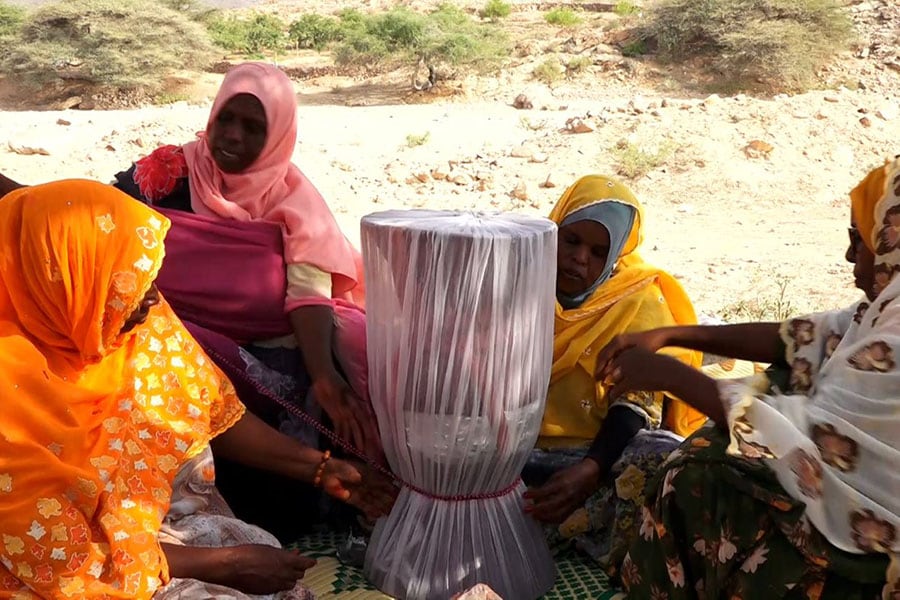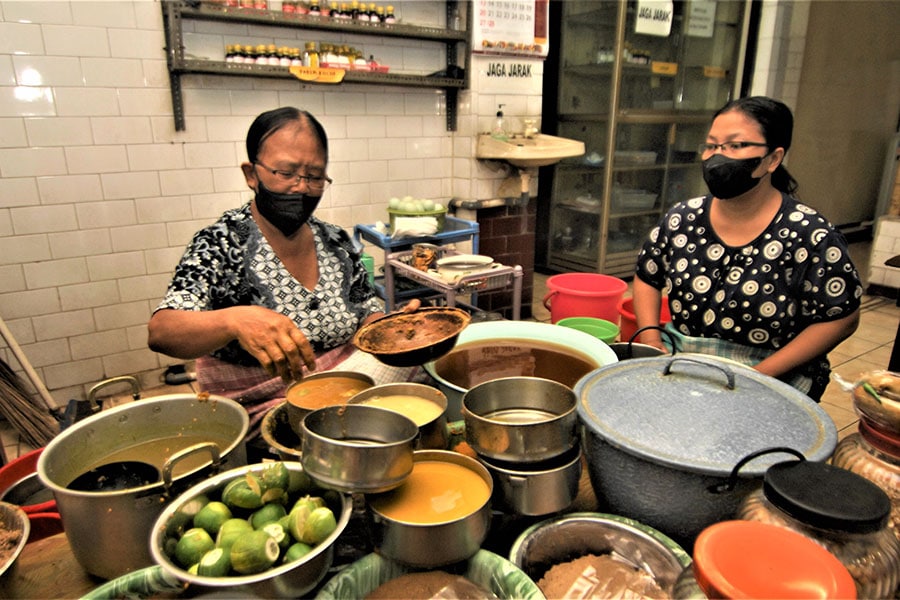
In Photos: UNESCO's list of the intangible cultural heritage of humanity for 2023
From rickshaw painting in Dhaka, Bangladesh, to a community-based care model in Belgium, Here's a look at traditions that made it to UNESCO's list of the Intangible Cultural Heritage of Humanity
Cultural heritage does not end at monuments and collections of objects. UNESCO's list includes the 'intangible'—traditions or living expressions inherited from our ancestors and passed on to our descendants, such as oral traditions, performing arts, social practices, rituals, festive events, knowledge and practices concerning nature and the universe or the knowledge and skills to produce traditional crafts. While fragile, intangible cultural heritage is essential in maintaining cultural diversity in the face of growing globalisation. Understanding different communities' intangible cultural heritage helps with intercultural dialogue and encourages mutual respect for other ways of life. The importance of intangible cultural heritage is not the cultural manifestation itself but rather the wealth of knowledge and skills transmitted through it from one generation to the next.
Related stories
1. Rickshaws and rickshaw painting in Dhaka, Bangladesh
 Image: © Shahabul Alam Sajib, Bangladesh, 2022
Image: © Shahabul Alam Sajib, Bangladesh, 2022
A rickshaw adorned with colourful art. Traditionally made by hand by a small group of craftsmen, almost every part of a rickshaw is painted with colourful floral patterns, natural imagery, birds and animals, creative depictions of historical events, fables, national heroes, movie stars and text. Rickshaw painting artists work on commission and usually pass on their knowledge and skills to their children and close relatives. Viewed as a vital part of Dhaka's cultural tradition and a dynamic form of urban folk art, it provides inhabitants with a sense of shared identity and continuity.
2. Midwifery: knowledge, skills and practices in Colombia, Cyprus, Germany, Kyrgyzstan, Luxembourg, Nigeria, Slovenia and Togo
 Image: © Jaime Acuña Lezama/Ministry of Culture of Colombia, 2016
Image: © Jaime Acuña Lezama/Ministry of Culture of Colombia, 2016
An Afro-Colombian midwife provides attention to a pregnant woman by listening to her womb with traditional techniques in Colombia. Companions and supporters of pregnant women and their families before, during and after birth, midwives make home visits, provide guidance and care, and facilitate birth preparation and capacity-building classes. Traditional midwifery knowledge is accumulated through direct experience, observation and interaction with the human body.They protect fundamental human rights by transmitting their knowledge to mothers and families. It varies according to the social, cultural and natural contexts of different communities and countries and sometimes includes knowledge of traditional medicine, medicinal plants and herbs. The related skills and expertise have been safeguarded, developed and passed on by practising communities for generations, especially within networks of women.
3. Sodai straw garden making in Lithuania
 Image: Loreta Sungailienė © Lithuanian National Culture Centre, Archive, 2021
Image: Loreta Sungailienė © Lithuanian National Culture Centre, Archive, 2021
Sodai crafter Loreta Lichtarovičienė demonstrates the making of Sodai at her workshop in Vilnius District. Sodai straw gardens are hanging ornaments made from the stalks of grains. This practice involves the cultivation of grain (typically rye), treating straw, and creating geometric structures of varying sizes. The structures are then decorated with details symbolising fertility and prosperity. Sodai gardens are believed to reflect the pattern of the universe and are associated with well-being and spirituality. They are hung over the cradles of babies, weddings, family tables, Easter and Christmas to wish happiness to newborns, fertility to newlyweds or harmony to the family. Although most practitioners are women, workshops are open to people of all ages and genders. They provide a sense of shared cultural heritage and continuity to the practising communities while strengthening communal partnerships, intergenerational bonds and cultural diversity.
4. Traditional craft skills and arts of Al-Mudhif building in Iraq
 Image: © Ataf Ibrahim Khaleel, Ministry of Culture, Tourism and Antiquities, Iraq, 2018 © Jassim Alasadi, Nature Iraq Organization, 2019
Image: © Ataf Ibrahim Khaleel, Ministry of Culture, Tourism and Antiquities, Iraq, 2018 © Jassim Alasadi, Nature Iraq Organization, 2019
Al-Mudhif is a large arched building made of reed and papyrus, both of which grow naturally in the marshes of southern Iraq. The building serves as a gathering place where community members can exchange, address conflicts, share experiences, tell stories and practise cultural activities and social rituals such as weddings, circumcisions, religious ceremonies and national celebrations. Al-Mudhif is also a space for transmitting traditional knowledge, values, handicraft skills, norms and customs to children and youth. The traditional customs and handicraft skills related to constructing Al-Mudhif are transmitted informally through hands-on practice and participation in cultural activities.
5. Transhumance, the seasonal droving of livestock in Albania, Andorra, Austria, Croatia, France, Greece, Italy, Luxembourg, Romania, Spain
 Image: © Natalia Montané, 2018
Image: © Natalia Montané, 2018
A kid from the Betriu family helps in the shearing of their sheep, Andorra. Transhumance refers to the seasonal movement of people with their livestock between geographical or climatic regions. Each year, in spring and autumn, men and women herders organise the movement of thousands of animals along traditional pastoral paths. They move on foot or horseback, leading with their dogs and sometimes accompanied by their families. An ancestral practice, transhumance stems from a deep knowledge of the environment. It entails social practices and rituals related to animal care, breeding and training and managing natural resources. Transhumance thus contributes to social inclusion, strengthening cultural identity and ties between families, communities and territories while counteracting the effects of rural depopulation.
6. Dabkeh, a traditional dance in Palestine
 Image: © Houriah Al Far, State of Palestine, 2022
Image: © Houriah Al Far, State of Palestine, 2022
Dabkeh dance performance in Lebanon by the Keffiyeh Ensemble in Palestine. Dabkeh is a popular group dance in Palestine accompanied by traditional wind instruments and popular singing. A social activity, it is performed in several regions during festivals, celebrations and events such as weddings and graduations. Dabkeh is performed by eleven dancers, regardless of gender. The movements involve jumping and hitting the ground with their feet. Dabkeh and the accompanying arts and crafts are transmitted informally through one-on-one learning and training. Dabkeh is a means of expressing cultural identity, celebrating family occasions and increasing social ties.
7. Art of Akhal-Teke horse breeding and traditions of horses' decoration in Turkmenistan
 Image: © Hasan Magadov, Turkmenistan, 2022
Image: © Hasan Magadov, Turkmenistan, 2022
The Akhal-Teke, a breed of horses, is characterised by their large size, intelligence, agility, strength and shiny coat. Akhal-Teke are hardy and can manage without food and water for long periods. Many customs and traditions around Akhal-Teke horses include naming rituals, horse beauty contests, and racing and riding games. Women primarily created and passed on the jewellery and lace used to decorate the horses. Knowledge and skills related to the breeding and care of Akhal-Teke horses are transmitted through formal and informal learning, and the related traditions contribute to social cohesion and increased awareness of the importance of living heritage in general.
8. Polonaise, traditional Polish dance, Poland
 Image: Andrzej Oleszko © Cracovia Danza Ballet, Poland, 2021
Image: Andrzej Oleszko © Cracovia Danza Ballet, Poland, 2021
The polonaise is a joyful Polish group dance, which a few can enact to even several hundreds of pairs marching in procession, following a trajectory proposed by the first pair. During the dance, the pairs perform various figures, such as raising joined hands to create bridges under which other participants can pass. The practice is typically transmitted within families, educational institutions, dance groups, and local communities. A form of joint celebration, the polonaise commemorates important moments in family and community life and symbolises cooperation, reconciliation and equality. Because people of all ages and backgrounds often dance it, it also promotes unity, solidarity and dialogue.
9. Tradition of blacksmithing in Gyumri, Armenia
 Image: Argam Yeranosyan © Ministry of Science, Culture and Sport of the Republic of Armenia
Image: Argam Yeranosyan © Ministry of Science, Culture and Sport of the Republic of Armenia
Blacksmithing, or the creation and repair of iron objects, has played a central role in the city of Gyumri, Armenia's local identity and cultural characteristics for centuries. Although the practice nearly disappeared in Armenia in the mid-twentieth century, it has survived in Gyumri, where inhabitants continue to preserve existing items – such as window lattices, fences, gates, doors, candlesticks and chandeliers – made by old masters and to forge and use the iron products in their daily life. Current blacksmiths, some of whom are fifth- or sixth-generation masters, play an active role in safeguarding and transmitting the tradition of urban blacksmithing and its history, traditional skills and knowledge.
10. Element Mahadra, a community system for the transmission of traditional knowledge and oral expressions in Mauritania
 Image: Elhaj © Conservation Nationale du patrimoine (CNP), M.C.J.S.P.R, Mauritanie, 2022
Image: Elhaj © Conservation Nationale du patrimoine (CNP), M.C.J.S.P.R, Mauritanie, 2022
Mahadra, sometimes called 'the university of the desert', is a community framework for education and socialisation in which traditional knowledge and literary expressions are transmitted, mainly through listening and memorisation. Dating back centuries, the classes occur under a tent, covered with mats or carpets and cushions on the floor. The topics covered include language and traditional literature, religious sciences and Sufism. Students also acquire knowledge about the universe and nature, including knowledge about rain, the desert, medicinal plants, animal tracks and using stars for navigation. Rooted in Mauritanian society and based on oral communication, Mahadra is intricately linked to transmitting Mauritanian poetry and storytelling, providing a sense of continuity, belonging and shared cultural identity for the communities concerned.
11. Sona, drawings and geometric figures on sand in Angola
 Image: © Jorge Dias Veloso, Angola, 2022
Image: © Jorge Dias Veloso, Angola, 2022
Sona refers to drawings and geometric figures drawn on sand like the one of the African spotted eagle-owl. Practised by the Lunda Cokwe and neighbouring peoples in eastern Angola, it is a form of expression that seeks to convey beliefs, thoughts and emotions, as well as the relationship between human beings and nature. The figures and drawings are viewed as a means of transmitting stories, knowledge and collective memory to new generations. In recent decades, educational institutes have started using Sona to teach and advance knowledge about mathematics, ethnomathematics and anthropology, among others.
12. Art of illumination: Təzhib/Tazhib/Zarhalkori/Tezhip/Naqqoshlik in Azerbaijan, Iran, Tajikistan, Türkiye, Uzbekistan
 Image: © MoCT, 2022
Image: © MoCT, 2022
Tezhip ( Illumination) is a centuries-old decorative art practised on the pages of manuscripts, calligraphic texts and miniatures. The main component is a gold leaf or gold paint, which entails specific knowledge and techniques. The colours, patterns, and motifs used have symbolic meanings, and it is common to embellish religious texts, literary and historical manuscripts, marriage deeds and even commercial treaties with illuminations. Today, traditional and contemporary interpretations of the element can be seen in manuscripts, miniatures, calligraphy, and stand-alone pieces of art.
13. Xeedho in Djibouti
 Image: Elmi Moussa © Ministère de la jeunesse et de la culture, Djibouti, 2022
Image: Elmi Moussa © Ministère de la jeunesse et de la culture, Djibouti, 2022
Xeedho is a dish a mother gives her son-in-law to celebrate the first week of her daughter's marriage. It consists of a container carved from a tree trunk that holds small pieces of dried dromedary meat fried in butter and preserved in ghee. The container is placed inside a basket, wrapped in aluminium foil and decorated with leather and shells. The arrangement is then covered with fabric and placed inside a bag made from traditional fabrics representing a woman's clothes. An integral part of the wedding ceremony in Djibouti and the subject of riddles and poetry, the ritual of making xeedho is transmitted informally within families, with girls watching to see how it is prepared. The xeedho represents a commitment to the honour of the bride and her family.
14. Al-Man'ouché, an emblematic culinary practice in Lebanon
 Image: © Bernard Jabre, Liban, 2022
Image: © Bernard Jabre, Liban, 2022
Al-Man'ouché, a flatbread, is the quintessential Lebanese breakfast prepared in homes and specialised bakeries. The dough is indented using the fingertips and topped with a mixture of thyme, sumac, toasted sesame seeds, salt and olive oil. Once cooked, a second garnish can be added, such as soft cheese (labne), tomatoes, cucumbers, olives and mint leaves. While preparing the dough, the practitioners pray that it will rise, with Muslims reciting the beginning of Fatiha and Christians reciting several prayers and making the sign of the cross before letting the dough rest. The techniques of preparing Man'ouché and its toppings are usually transmitted informally from parents to children. The aroma of al-Man'ouché is a strong identifying factor that evokes traditional morning gatherings, or sobhhiyé, key moments of social interaction.
15. Elechek, Kyrgyz female headwear: traditional knowledge and rituals in Kyrgyzstan
 Image: © National Commission of the Kyrgyz Republic for UNESCO, 2022
Image: © National Commission of the Kyrgyz Republic for UNESCO, 2022
The ritual of elechek wrapping starts with burning the juniper to purify the physical and spiritual space. Elechek is a traditional female headwear consisting of a hair cap and a very long piece of white fabric wrapped around the head like a turban and adorned with embroidery, ribbons and jewellery. The practice is an integral part of the traditional marriage ceremony in Kyrgyzstan. A rite of passage, the ritual of wrapping the bride's first elechek takes place at her family's house before she leaves with the groom. A married woman may wear the elechek on significant occasions, changing its styles accordingly. The knowledge and skills are usually transmitted informally during wrapping ceremonies, from mothers to daughters and from female elders to younger women, strengthening intergenerational ties and promoting solidarity and empowerment.
16. Aklan piña handloom weaving in the Philippines
 Image: Gerald Marcfred Diliera © National Commission for Culture and the Arts, Philippines, 2018
Image: Gerald Marcfred Diliera © National Commission for Culture and the Arts, Philippines, 2018
A source of pride and a strong identity marker, Piña is a traditional textile made from pineapple leaf fibres and woven using a handloom in the Philippines. Farmers harvest the leaves of the pinya Bisaya, a specific pineapple species, and extract the fibres by hand. The knowledge and skills of piña handloom weaving are primarily passed on within families. Children grow up observing older family members engaged in pinya Bisaya cultivation and piña weaving and eventually learn the craft under their guidance. Pina is a vehicle for innovation and creativity, as practitioners constantly develop new designs and patterns while preserving the old ones.
17. Traditional irrigation: knowledge, technique, and organisation in Austria, Belgium, Germany, Italy, Luxembourg, Netherlands, Switzerland
 Image: © Switzerland Tourism (André Meier and SL-FP), 2019
Image: © Switzerland Tourism (André Meier and SL-FP), 2019
A traditional slope irrigation in the Upper Valais, Switzerland, where the water from the channel is distributed over the meadow with the help of a watering axe. Traditional irrigation uses gravity and hand-made constructions such as channels and ditches to distribute water from naturally-occurring water catchment points (such as springs, streams and glaciers) to the fields. Practitioners choose specific days and periods to divert the water manually, and social gatherings and festivities often accompany the beginning or end of the watering season. Traditional irrigation requires a profound understanding of the natural landscape, water flow and weather conditions. The practice is tied to a specific vocabulary and the knowledge required (such as understanding the impact of the lunar cycle on water flow and skills related to woodworking). The practice is typically passed on to younger generations informally through observation and training from experienced members.
18. The practice of opera singing in Italy
 Image: Alessia Santambrogio © As.LI.Co
Image: Alessia Santambrogio © As.LI.Co
Italian opera singing is a physiologically controlled way of singing that enhances the carrying power of the voice in acoustic spaces such as auditoriums, amphitheatres, arenas and churches. Performed by people of all genders, it is associated with specific facial expressions and body gestures and involves a combination of music, drama, acting and staging. Singers are identified by vocal range and colour and divided into several registers (tenor, baritone, bass, soprano, mezzo-soprano and alto). The knowledge and skills related to Italian opera singing are transmitted orally between a maestro and pupil through vocal exercises and the gradual introduction of different musical repertoires and styles.
19. Bolero: identity, emotion and poetry turned into song in Mexico and Cuba
 Image: Alberto Medrano © Medrano, 2022
Image: Alberto Medrano © Medrano, 2022
A group of bearers perform boleros on the beach of Progreso in Mérida, Yucátan, Mexico. Bolero is an indispensable part of the Latin American sentimental song, with a strong lyrical character deeply rooted in Cuba and Mexico. It is a cultural amalgam which combines the language used in European poetry with the African rhythms of enslaved peoples and the sentiments of the native peoples of the Americas. Bolero's lyrics allude to daily life, and the songs are performed in various spaces, from households to public areas and large concert halls, as well as in festivals and as serenades. The practice is generally passed down within families through oral tradition and imitation. As a robust cultural symbol for broad sectors of Cuban and Mexican societies, especially in urban areas, it has served as a means of expressing emotions and feelings for over a century.
20. Jamu wellness culture in Indonesia
 Image: Ganesh Ahsha Dalila © Dwi Ranny Pertiwi Zarman, Indonesia, 2022
Image: Ganesh Ahsha Dalila © Dwi Ranny Pertiwi Zarman, Indonesia, 2022
Jamu is a form of herbal medicine and treatment practised in Indonesia since the eighth century. It is based on the belief of curing hot diseases with medicines of a cold nature and cold diseases with medicines of a hot nature, with a healthy condition being a balance between hot and cold elements in the body. The colours and shapes of plants are also associated with the colours and shapes of the organs whose health they promote. Jamu aims to increase immunity and maintain health. People of all ages take Jamu medicine, and though anyone can make Jamu, most Jamu makers are adult women. The medicine is prepared using herbs and spices often planted by Jamu makers, who then concoct recipes tailored to each customer's age, lifestyle, and health concerns. The practice is transmitted informally, typically within families and among neighbours, although some practitioners are self-taught. It is associated with respect for confidentiality and trust, and its practice strengthens social ties.
21. Element Traditional knowledge, methods and practices concerning olive cultivation in Türkiye
 Image: Aygül Harmancı © MoCT, 2022
Image: Aygül Harmancı © MoCT, 2022
Women sort and break the olives during the harvest. In Türkiye, olive cultivation refers to grafting, pruning and fertilising wild olive trees, called delice, and picking, harvesting and processing the olives. The methods used are based on traditional knowledge and practices concerning nature, such as ideal soil characteristics, climate and manure. The olive trees are grafted and picked according to the folk calendar, and several rituals, festivals and social practices (such as folk plays, dances, contests and feasts) mark the beginning and end of the harvest season. For instance, villagers come together to pick the first olives of the season, and some olives are deliberately left in the groves for poor people to pick. Traditional knowledge, methods and practices have been transmitted orally and by participating in the associated practices within families and villages for centuries. In addition to the symbolism of the olive tree and leaf (which are associated with peace, eternity, wisdom and harmony), the practices concerning olive cultivation enhance solidarity, cooperation and harmony within the community.
22. Safeguarding foster care heritage in the merciful city of Geel: a community-based care model in Belgium
 Image: Bert De Deken © OPZ Geel, 2021
Image: Bert De Deken © OPZ Geel, 2021
A photo of a foster family in Geel: Ann (left) with her son (right) and two boarders. The Belgian town of Geel is known for its tradition of hosting people with mental disorders in the homes of foster families. A form of psychiatric care, the community-based practice encourages the social participation of mentally vulnerable people while destigmatising mental illness. Over time, the practice has evolved into a scientifically and medically supported programme, with laws and decrees defining the conditions, responsibilities and rights of foster families, guests and the Public Psychiatric Care Centre. The programme highlights the complementarity of diverse healthcare approaches by nurturing a warm-hearted ecosystem where cultural and healthcare practices and medical institutions merge. It is a cost-effective mental health service that ensures healthy lives and promotes well-being for all ages.







